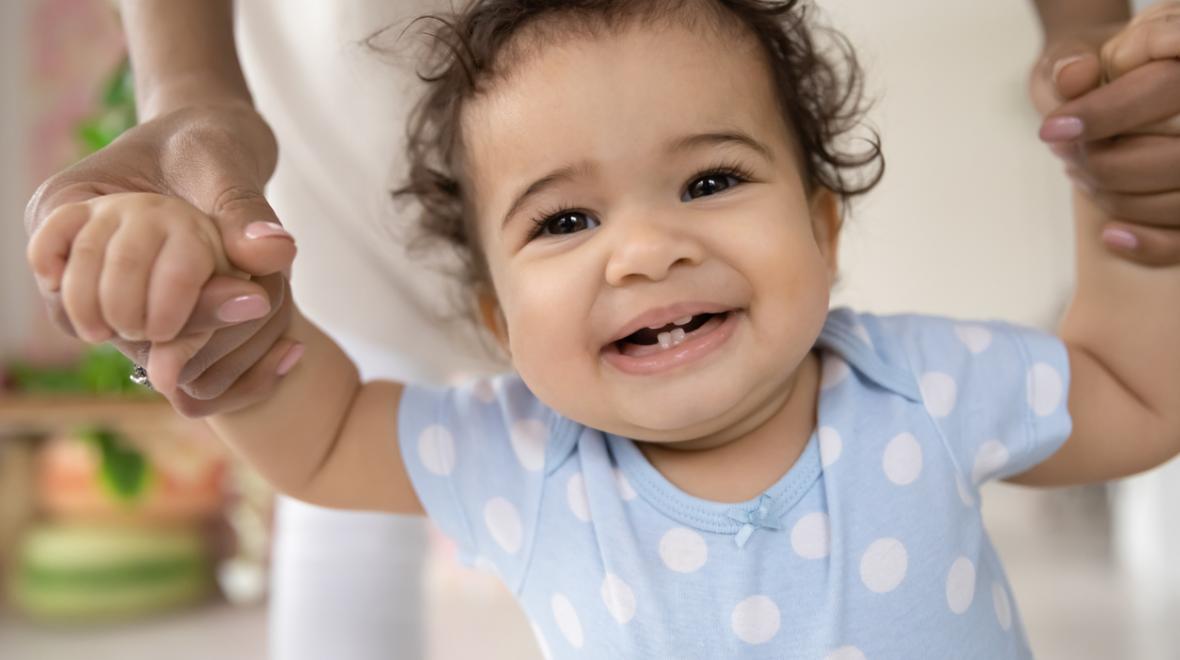
We call him ‘Benny the Biter,’” she says, smiling down at the 1-year-old with his arms wrapped around her leg.
Before she had kids, Elizabeth Jeffers admits that she thought that a child who bit others was being “mean.” Because her older son, Harrison, didn’t bite, Jeffers wasn’t quite sure what to think — or do — when Benny started sinking his baby teeth into others.
If your young child is a biter, you’re not alone. The National Association for the Education of Young Children estimates that one out of every 10 toddlers will engage in “biting behaviors.” And this behavior may be even more common than that. “Most kids will do it at least once,” says Beverly Wilson, Ph.D., a professor of clinical psychology at Seattle Pacific University who specializes in child and developmental psychology.
There is a difference, however, between “biting behavior” and teething. Parents can usually tell kids are teething when “everything goes in the mouth,” says Diane McIntyre, DDS, of Wallingford Dental Arts in Seattle. Because teething causes discomfort, the child will chew on whatever is at hand: a toy, a book or a person. In contrast, with “biting behavior,” the child’s biting is not constant, and the target is almost always people.
What it means
For young children, biting is often a way to communicate, says Wilson. Linda Grim, M.D., agrees. Grim, a pediatrician at North Seattle Pediatrics, sees biting behavior when kids are “reacting to strong feelings such as fear, frustration or excitement.” For example, when other kids are around, a child may begin biting if they feel overwhelmed by the competition for toys or space, Grim says.
Put simply, biting is a way in which your child conveys their feelings or needs. Jeffers says that when Harrison, Benny’s older brother, grabbed toys away, Benny’s “teeth came out.” “I think he got tired of being pushed around,” Jeffers says of her youngest. “Biting was his way of setting boundaries.”
Don’t worry that biting means your child will have later issues with aggression. “Biting is not a good predictor of future behavioral problems,” says Wilson. Typically, it’s a sign that your child is having trouble finding an appropriate way to be heard. While that may be little comfort when the day care calls to say your child has hurt another tot, there are techniques you can use to help stop your child’s biting.
Wilson and Grim suggest that parents tell their kids, “Biting is not okay” and “It doesn’t feel good.” And be patient — it may take some time before your young one understands.
What should parents not do? Bite back. “This technique is harmful and not helpful,” says Grim. In fact, Wilson points out, a parent who bites back is teaching their child that it’s okay to hurt others.
Finding the cause
If biting persists, try to figure out when it occurs. Then, says Grim, “gently maneuver your child out of bite position and say something like ‘No biting, please hug.’”
Away from home, watch for your child’s triggers. Helping your child to find more space around other kids may stop many of these bites, Grim says.
Chances are, with attention and patience, things will improve. And while most parents can handle those “little chompers” on their own, Wilson suggests calling in an expert, such as a child psychologist, if needed. “Even one session may be enough to give you new strategies — or just the encouragement you need to keep trying,” she says.
The good news? Even persistent biting behavior will usually end when your child starts talking. Says Grim, “Most toddlers will move through this stage quickly with only a few bites as they learn other ways to express themselves.”
That’s just what happened with Benny. With help from his parents, he has a new way to be heard, even though he can’t talk yet. As Jeffers reports, “Now he grunts instead.”
Ask yourself these questions to identify the triggers of biting behavior:
Books about biting
Sensory chew toys |
Editor’s note: This article was originally published a number of years ago, and was updated in June 2022.











